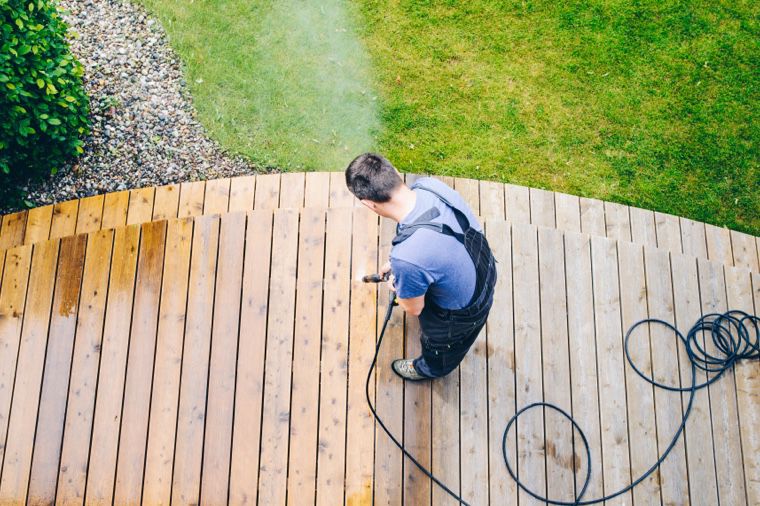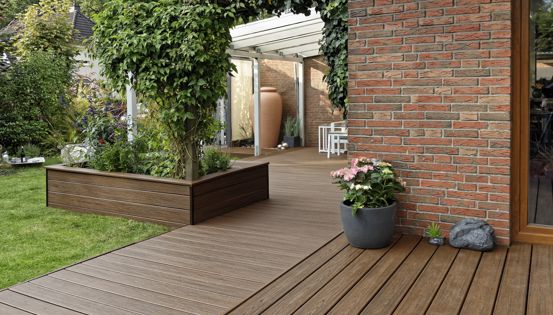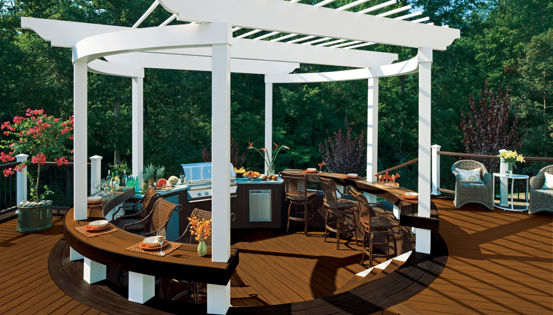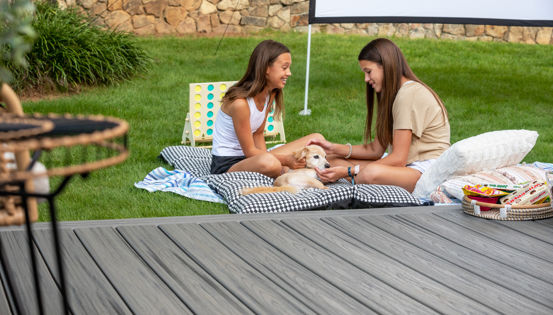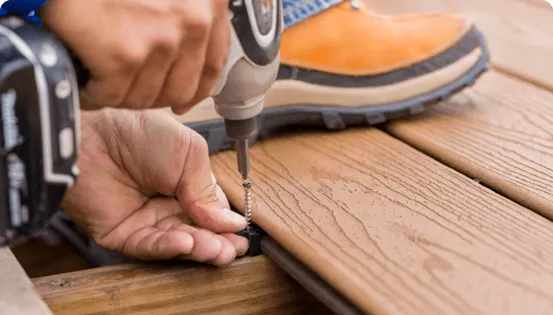A deck is an extension of your living space. When the weather is nice, your deck becomes a hub of activity, the perfect place to entertain friends and family outdoors. The last thing you want is for your deck to be unsafe, which is why a slippery deck can be a problem.
Why is My Deck Slippery?
Over the changing seasons, leaves and debris will accumulate on your deck. This may seem harmless at first, but the longer you wait to clear debris off your deck, the longer moisture will stick around, providing the conditions for mold, mildew, algae and moss to grow and cause a slippery deck surface.
If you live in a moist climate or your deck is shaded, these factors will expedite the growth of these organisms, as they thrive in a damp, dark environment. Even the buildup of pollen and other debris can create a slippery surface when moisture is present.
Whether your deck is made of natural wood or composite decking material, each can be just as slippery as the other under the conditions described above. While composite decks are built to last longer than natural wood decks, their surfaces aren’t impervious to mold and moss and the slipperiness that comes with them.
Preventing Your Deck from Becoming Slippery
The best strategy for a slip-resistant deck surface, whether made of wood or composite material, is to perform routine cleaning and maintenance.
Sweep and Clear Debris
Promptly sweeping leaves from your deck – particularly after storms and rain – will prevent the buildup of moisture on the deck surface and the growth of mold, mildew, and algae. You can also clear debris from cracks and gaps between boards with a putty knife or similar flat edge to halt moisture and organism growth.
Clean your Deck Annually
This is perhaps the most important step in preventing a slippery deck surface. A thorough cleaning each year, ideally with a pressure washer, will allow the natural wood grain (or simulated wood grain on composite decks) to provide extra traction and slip-resistance.
You can buy commercially available cleaning solutions or create your own by mixing ⅓ cup of powdered laundry detergent (ammonia-free), 1-quart of bleach and 3 gallons of water. Use a broad fanning nozzle with the power washer to avoid causing damage to paint or wood stain.
If a power washer is not available, a wet-mop or pump sprayer will also get the job done. Apply the cleaning solution and allow it to sit for 15 minutes. Afterwards, scrub the deck boards with a scrub brush attached to a wood or broom handle (this makes the process much easier and faster). Finish by thoroughly rinsing with a hose and then allowing it to dry.
Apply Anti-Slip Products
Lastly, if you’re looking for a little extra slip resistance for high traffic areas, steps or other areas of concern, consider a marine grade anti-slip product, such as Rust-Oleum Marine Anti-Slip Additive. This and similar anti-slip products typically contain either sand or aggregates that are mixed into paint or resin to provide extra traction. You may also consider applying self-adhesive strips of coarse grit, which feels like a very light grade of sandpaper.
As an Amazon Associate, Decks.com earns from qualifying purchases from the links in this post.
